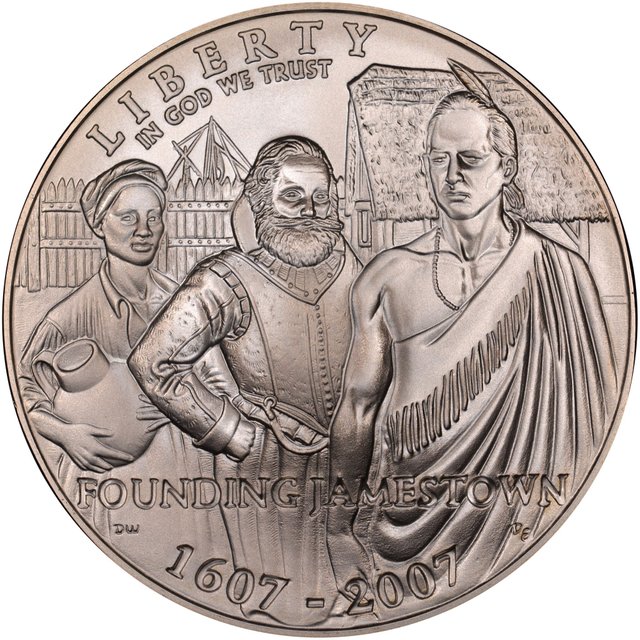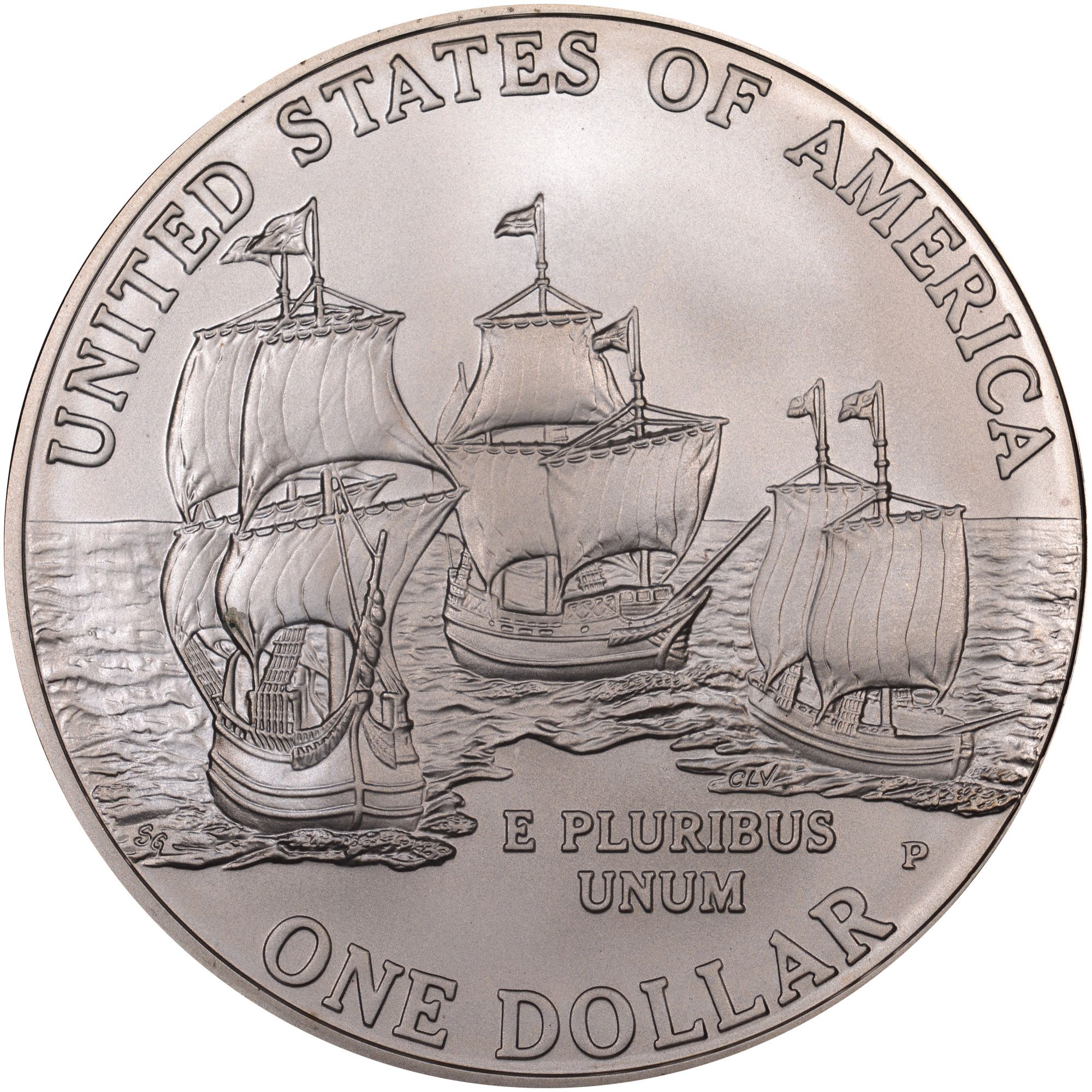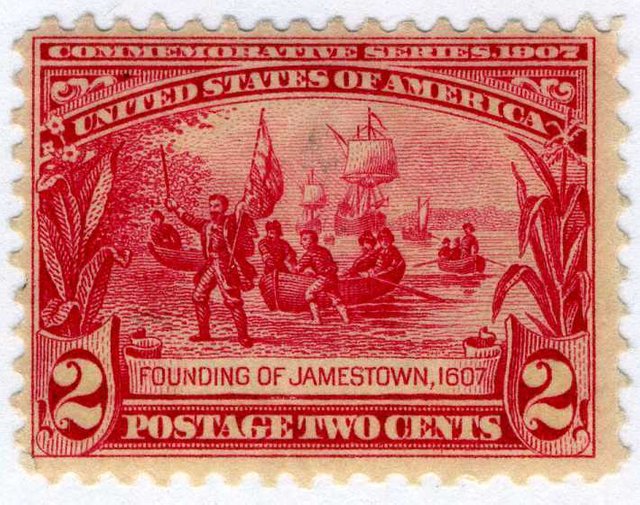BEYOND Common... 2007 Jamestown Commemorative Silver Dollar

BEYOND Common... 2007 Jamestown Commemorative Silver Dollar
The 2007 Jamestown Silver Dollar (along with a $5 gold coin) commemorates the 400th anniversary of the founding of Jamestown. The founding of Jamestown is also featured on the 2000 Virginia State Quarter and a 1907 U.S. Postal Stamp.
In 1606, King James I granted a charter to The Virginia Company, to establish an English settlement in the Chesapeake region of North America. The Virginia Company was a joint-stock venture (an early version of today’s corporations). People would buy a share in The Virginia Company, thus giving it the capital to start and supply a colony, and the stock holders hoped that the colony would return to them a profit. In December of 1606, three ships, the Susan Constant, Godspeed, and Discovery sailed from London with Company instructions to build a secure settlement, find gold and silver, and seek a water route to the Orient. After over 5 months at sea on May 14, 1607, the 104 settlers landed at Jamestown - the first permanent English settlement that would later become the United States of America.
For the scope of this article only a brief over view of three historical figures will be addressed. Those that contributed in a positive way to the founding of Jamestown and peace with the native population: Captain John Smith, John Rolfe, and Pocahontas.
From 1607-1609 Captain John Smith was the governor of Jamestown. Disease, famine, and sporadic attacks from the Algonquians Indians caused heavy damage to the new colony. But Captain John Smith was able to open up trade and bring temporary peace with the Algonquians Indians. Legend has it that Captain Smith was captured by an Indian hunting party and was about to be executed by the Indian Chief Powhatan. But the Chief's daughter Pocahontas pleaded for his life - and Chief Powhatan spared it. Relations between the settlers and the native americans improved, until Captain Smith was injured in a Gun Powder explosion and was forced to return to England for medical treatment. Not long after Captain John Smith's departure the first Anglo-Powhatan War (1610-1614) broke out.
John Rolfe arrived at Jamestown in 1610 with some untried seeds for new, sweeter strains of tobacco. By 1612, Rolfe's new strains of tobacco had been successfully cultivated and exported, turning the settlement into a profitable venture. Tobacco became the long awaited cash crop that allowed the Virginia Company to finally start to turn a profit. Soon other tobacco plantations and new outposts sprung up though out the area. Jamestown could finally be considered a permanent settlement.
In the spring of 1613 - English soldiers captured Pocahontas and held her for ransom. They told Chief Powhatan that they would return his daughter after the chief had returned English prisoners, the arms and tools that the Indians had stolen, and some corn, but Chief Powhatan refused. Pocahontas was held captive for nearly a year, during this time she meet John Rolfe. Eventually John Rolfe and Pocahontas made plans to wed. Chief Powhatan gave his consent to this peace-making marriage and the wedding ceremony was held in Jamestown’s church on April 5, 1614. The marriage ushered in a limited time of peace and goodwill between the English and the Indians.
Today, the original location of the Jamestown settlement contains a rebuilt replica of the settlement, a museum, and an archaeological site. It is preserved by the U.S. National Park Service and Preservation Virginia.
Sources and additional information:
http://historicjamestowne.org/
https://en.wikipedia.org/wiki/Colony_of_Virginia
http://www.history.com/topics/jamestown
https://www.nps.gov/jame/learn/historyculture/a-short-history-of-jamestown.htm

